How To Use Resistance Bands
Resistance bands, otherwise known as exercise bands, have become one of the hottest talking points in the world of fitness in recent years. In a world where advanced tech usually rules the roost, these simple products buck the trend by delivering efficient muscle-building possibilities while they can also be used to work virtually any muscle group you want to target.
Learn the different ways how to use resistance bands and their true beauty is that they can be used anywhere. This makes resistance bands a perfect investment for anyone who wants to stay fit while traveling for work or leisure. By the end of this guide, you will know how to make the most of them.
The Basics Of Using Resistance Bands
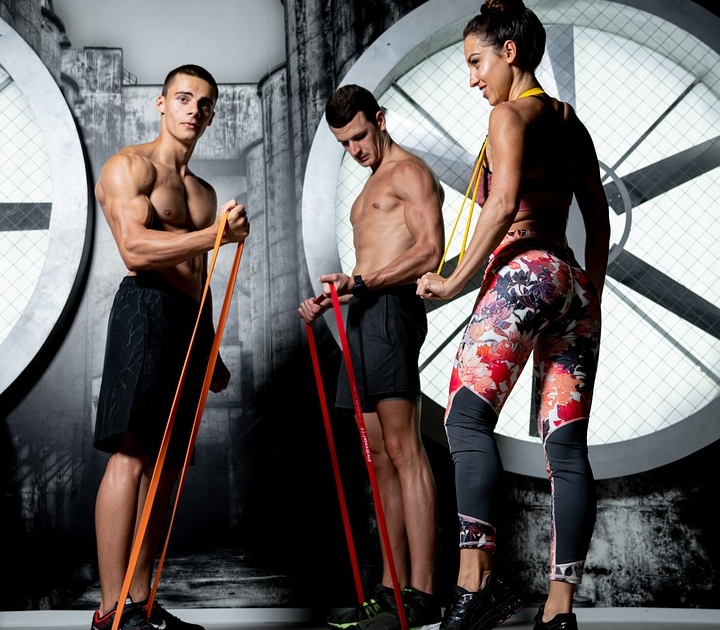
Resistance bands are made from heavy-duty rubber and have been used since the latest 19th century. For a long time, exercise bands were primarily thought of as a tool used in physical therapy and rehabilitation following injuries.
However, they have since become very popular in the world of fitness for a whole host of reasons, including but not limited to;
- They develop muscle memory to strengthen the muscles without placing strain on bones and joints.
- The fact that you use resistance rather than lifting a weight reduces the threat of injuries.
- Increasing or decreasing the weight (resistance) is easy, making them a very responsive tool.
- They are a cost-effective solution, do not require extra equipment, and avoid the need for digital tech.
- In addition to portability, you can start using resistance bands within a matter of seconds.
Depending on the exercises selected, resistance bands can be used to build lean muscle mass or bulk up. They are a great addition to your outdoor backpack on your travels but are equally ideal for home gym users and individuals that prefer outdoor workouts rather than the gym.
When you know how to use resistance bands you will understand they can be used by using the resistance of your own body or by connecting one end to a stable structure. Unfortunately, many people continue to doubt their capabilities simply because, unlike other fitness equipment, they have not been taught how to use them.
Using Resistance Bands: Choosing Your Resistance Bands
Due to the fact that the resistance can be changed during workouts simply by changing your stance, it is very common for people to think that you can just use the same band for everything.
However, if you’ve seen someone else using resistance bands, the colors they use aren’t simply a matter of taste. When looking at exercise bands, like the XG-PRO Resistance Bands, each color is attributed to a different level of resistance. They are as follows:
- Red Band (15 – 35 lbs) – 41 inches Long X 0.5 inches Wide
- Black Band (25 – 65 lbs) – 41 inches Long X 0.9 Inches Wide
- Purple Band (35 – 85 lbs) – 41 inches Long X 1.3 Inches Wide
- Green Band (50 – 125 lbs) – 41 inches Long X 1.7 Inches Wide
- Blue Band (65 – 175 lbs) – 41 inches Long X 2.5 Inches Wide
Whether fitness bands are used for strength training, rehabilitation, or any other purpose, it is best to invest in a full pack. After all, the strength of your thighs will differ greatly from your triceps. Besides, if you are a beginner, it’s very likely that you will progress through the different colors over time.
Even the full collection of bands will take up minimal room in your home or fitness backpack. If you want to see the best gains from your resistance bands workouts, you must match your bands to each chosen exercise. Routines should be tough but must not compromise your form.
Using Resistance Bands: Quick Tips To Achieve Better Form
The success or failure of resistance bands workouts will largely depend on maintaining good form. Failure to do this will result in an imbalance that means one muscle works harder than the other. Likewise, this can increase the risk of injuries.
Some of the best ways to maintain better form include;
- Watch a video or get someone to teach you the exercise before starting.
- Test the band before completing a full set to check the resistance is suitable.
- Use a Sharpie to draw the centerline on the band to keep legs or arms spaced correctly.
- Watch yourself in a mirror to confirm that you are performing the exercise correctly.
- Aim to fatigue the muscles after 8-12 reps.
Those general tips will lead to maximized safety and performance efficiency. Frankly, that’s the least you deserve.
Using Resistance Bands: 5 Popular Exercises
No two people are identical, which is why you need to build a resistance bands workout that is aligned to your objectives. However, some exercises are more popular than others. Here are some that you can try either at home or when living off-grid for a few days.
#1. Single Arm Bicep Curl
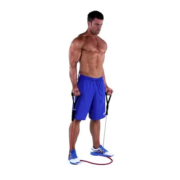
Stand on the exercise band with your feet shoulder-width apart. Grasp the band with one hand facing forwards and then curl it like you would a dumbbell.
#2. Squat
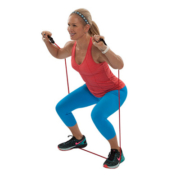
Stand on the band with feet wider than your shoulders. Bend your elbows to bring the resistance band to the top of your shoulders and then complete a squat.
#3. Lateral Walk
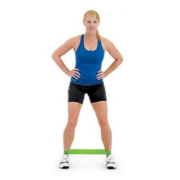
Take lateral steps (like a crab) while still in the half-squat position. Walk to one side, and then return to the starting point by moving back the other way.
#4. Kneeling Crunch
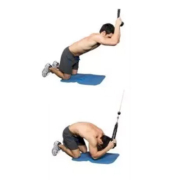
Once the anchor has been attached, kneel down facing away from the anchor. Holding the bands, bend down to a 90-degree position and then lift back up.
#5. Chest Fly
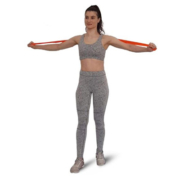
Then pull your arms forward, while still extended, until the hands meet in the middle. Then return to the arms stretched to the side position.
The Final Word
Resistance bands are the perfect addition to any fitness enthusiast’s arsenal. For workouts at home or on the go, they can deliver a full-body workout of varying intensities. It can take a few days to truly get used to them. Once you do, you’ll never look back.




